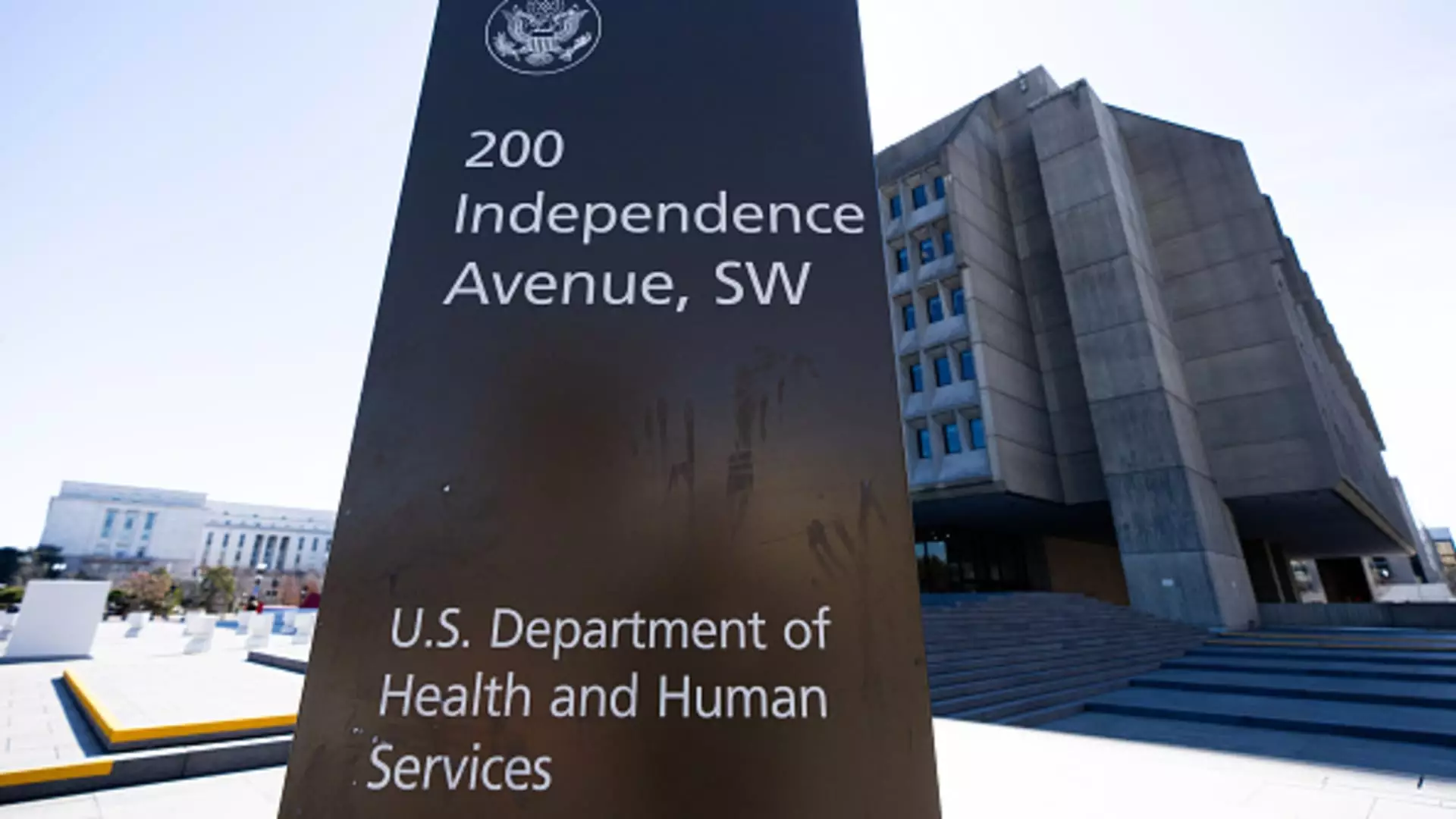The recent decisions emanating from the U.S. Department of Health and Human Services (HHS) signal a catastrophic retreat from responsible governance in public health, a domain that should be safeguarded against the whims of political maneuvering. With the looming threat of up to 10,000 layoffs, not only is HHS about to shed nearly a quarter of its workforce, but the ramifications of such a drastic transformation are poised to ripple across the very fabric of American health services. This is not merely a matter of bureaucratic restructuring; it represents a grave risk to public health and safety that we can ill afford in an era marked by rising health crises.
Stripping Rights and Services
In a strategic move that is nothing short of alarming, President Donald Trump has initiated actions to strip federal workers of collective bargaining rights. This tactic is not just a simple political gambit; it’s a calculated step that undermines the very foundation of worker protections. With Health Secretary Robert F. Kennedy Jr. at the helm, the proposed overhaul of HHS seeks to consolidate essential services into a new office called the Administration for a Healthy America. Such bureaucratic reorganizations rarely enhance efficiency; they typically obscure accountability, complicate service delivery, and diminish the resources available to combat critical health issues like infectious disease outbreaks and addiction.
Senator Patty Murray has compellingly described these cuts as setting the stage for a “Department of Disease,” hinting at a chilling future where our governmental response to health threats is severely compromised. The juxtaposition of reducing the workforce while simultaneously confronting pressing health threats — such as the ongoing measles outbreak — paints a picture of reckless disregard for public welfare. The trajectory aims toward a public health landscape marred by inefficiency and under-preparedness, inviting disaster when humanity most needs reliable support.
Funding Cuts and Immediate Job Losses
The implications extend beyond federal layoffs—state and local health departments are also experiencing the brunt of this fiscal contraction. The decision to retract over $11 billion in COVID-19-related funds undoubtedly threatens the stability of local health ecosystems. Health departments across the nation already face layoffs; many of these positions have evaporated overnight, leaving communities vulnerable and under-resourced during pivotal moments of public health response.
Local officials are left scrambling, attempting to assess the long-term impacts of this budget retrenchment. Lori Tremmel Freeman, the chief executive of the National Association of County and City Health Officials, articulated the urgent distress felt at the ground level, underscoring that the repercussions of these cuts are being felt immediately and harshly across state jurisdictions. This scenario reveals an alarming paradox: as public health challenges rise, our funding and personnel base—the very backbone supporting America’s health—are crumbling.
An Inefficient Bureaucracy or Sabotaged Services?
In his determination to dismantle what he perceives as a “sprawling bureaucracy,” Secretary Kennedy pointedly criticized HHS’s budgetary management, dismissing the efforts aimed at improving the health outcomes of Americans. Yet, the assertion that cutting jobs will lead to better performance is fundamentally flawed. History has shown that health improvements arise from robust funding and well-coordinated regional health initiatives, not from culling the experts and resources necessary to enact meaningful change.
Alarmingly, the proposed job cuts also target key agencies including the Food and Drug Administration (FDA), the Centers for Disease Control and Prevention (CDC), and the National Institutes of Health (NIH)—critical institutions responsible for managing food safety, responding to disease outbreaks, and conducting vital health research. The removal of thousands of skilled employees from these organizations threatens the intricate networks of public health built to safeguard citizens’ wellbeing. Instances of disease spread and foodborne illness outbreaks are already devastating—how will these essential services hold up when their workforce has been deliberately weakened?
The Impending Fallout
As federal employees at the CDC and elsewhere find their collective bargaining rights stripped, their voices and rights become mere footnotes in a larger, partisan narrative. This creates an environment where those who dedicate their careers to the public good are increasingly marginalized. The actions taken by the Trump administration not only threaten worker rights but also jeopardize the fundamental commitments to public health that ensure safety, care, and accountability.
The stakes could not be higher. The fabric of American public health relies on concerted efforts, personnel, and resources to respond effectively to challenges. In an age that calls for climactic health interventions—whether due to pandemics, natural disasters, or systemic barriers to healthcare—this dismantling of essential services spells disaster. What awaits us is a future fraught with vulnerable populations and unprepared health systems, all in the name of an ill-advised quest for reduced “bureaucracy.” In this pivotal moment, we must be vigilant and vocal to safeguard the public health institution meant to serve us all.

Leave a Reply